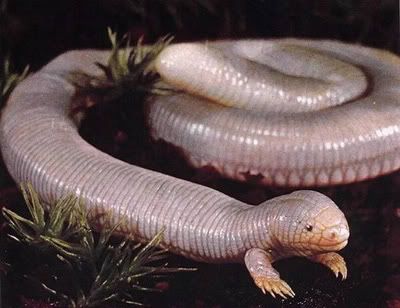If you haven't heard of the book and how much the intelligent design (creationism) crowd is loving it, I'd encourage you to read up on the fracas here and here. After that, there's a nice critique I'd urge you to read through titled "Misunderstanding Darwin: Natural selection’s secular critics get it wrong" by Ned Block and Philip Kitcher.
- - - - Updated (2 March)
I neglected to mention that you can read more from Fodor and Piattelli-Palmarini here at The New Scientist. I'm not sure they really understand the theory of evolution by natural selection, especially when I read things like...... it is not self-evident why species that have a recent common ancestor - as opposed, say, to species that share an ecology - are generally phenotypically similar. Darwin's theory of natural selection is intended to answer this question. Darwinists often say that natural selection provides the mechanism of evolution by offering an account of the transmission of phenotypic traits from generation to generation which, if correct, explains the connection between phenotypic similarity and common ancestry.
Moreover, it is perfectly general: it applies to any species, independent of what its phenotype may happen to be. And it is remarkably simple. In effect, the mechanism of trait transmission it postulates consists of a random generator of genotypic variants that produce the corresponding random phenotypic variations, and an environmental filter that selects among the latter according to their relative fitness. And that's all. Remarkable if true.
- - - -
After providing a biological perspective of the book's core argument, Block and Kitcher get into the philosophical argument -- and why it's irrelevant. This requires some background (which they provide) on key concepts: intensional and extensional properties of a statement or claim.You should really read their explanation, but as I (mis?)understand it, the gist of what F&PP got wrong was in asserting that natural-selection-in-action can't distinguish between a trait with fitness advantages and a tightly linked/correlated neutral trait that's just along for the ride. Who survives and reproduces is the same no matter which trait is advantageous. Therefore, they seem to claim, natural selection is inadequate to provide an explanation for observed patterns of the diversity of life. Block and Kitcher rephrase F&PP's main contention as follows:
Here, then, is the problem restated: the causal processes at work in evolution cannot distinguish between coextensive properties, but selection-for requires that they be distinguished.This (in my mind) points out their confusion about how natural selection works. It isn't some sort of external force acting on populations of organisms, as they seem to present it. Instead it's merely a consequence of heritable traits resulting in differential reproduction and survival of individuals. The causal mechanisms, as we understand them, work whether or not additional neutral traits are carried along for the ride.
After describing the problem with F&PP's argument against natural selection (which apparently has been criticized before) Block and Kitcher end their critique quite nicely...
Fodor and Piattelli-Palmarini take the role of philosophy to consist in part in minding other people’s business. We agree with the spirit behind this self-conception. Philosophy can sometimes help other areas of inquiry. Yet those who wish to help their neighbors are well advised to spend a little time discovering just what it is that those neighbors do, and those who wish to illuminate should be sensitive to charges that they are kicking up dust and spreading confusion. What Darwin Got Wrong shows no detailed engagement with the practice of evolutionary biology, nor does it respond to the many criticisms that have been leveled against earlier versions of its central ideas. In this latter respect, the authors resemble the creationist debaters who assert that evolution is incompatible with the second law of thermodynamics, hear detailed refutations of their charge, and repeat their patter in the next forum.
We admire the work that both Jerry Fodor and Massimo Piattelli-Palmarini have produced over many decades. We regret that two such distinguished authors have decided to publish a book so cavalier in its treatment of a serious science, so full of apparently scholarly discussions that rest on mistakes and confusions—and so predictably ripe for making mischief.


























